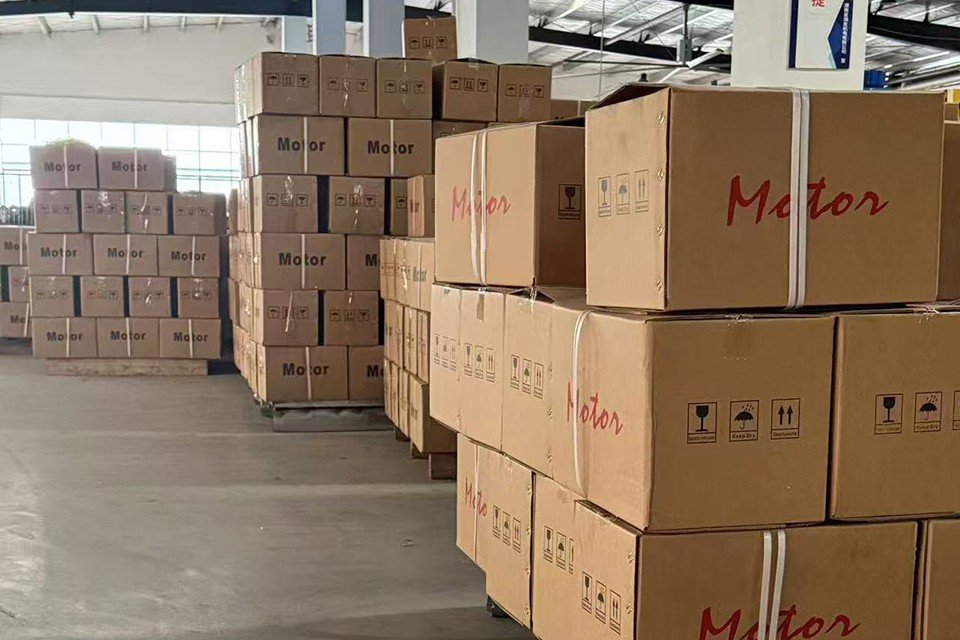
Introduction
In the process of agricultural mechanization, motor technology lies at the heart of efficient machinery operation. Single-phase asynchronous motors, known for their simple structure, cost-effectiveness, and adaptability, have become the preferred power source for small and medium-sized agricultural equipment. This article delves into the technical principles, key parameters, and innovative applications of single-phase asynchronous motors in agriculture, offering scientific insights for equipment selection and maintenance.
1. Working Principle and Structural Features of Single-Phase Asynchronous Motors
Single-phase asynchronous motors operate based on electromagnetic induction, comprising a stator and rotor. When the stator winding is connected to a single-phase AC power supply, a rotating magnetic field is generated via a starting capacitor, inducing current in the rotor conductors to produce torque and drive the motor. Key advantages include:
- Simple Structure: Requires only a single-phase power supply, eliminating the need for complex three-phase systems—ideal for rural electrical grids.
- Flexible Starting: Utilizes capacitor or resistor splitting to initiate rotation, meeting the instant load demands of pumps, harvesters, and other machinery.
- Easy Maintenance: Fewer components and lower failure rates suit harsh field environments.
However, challenges such as high starting currents (4-8 times the rated current) and relatively low efficiency (70%-80%) necessitate technical optimizations.
2. Critical Parameters of Single-Phase Asynchronous Motors in Agricultural Machinery
The operational efficiency of agricultural equipment directly correlates with motor parameters. Key metrics include:
- Power and Speed
- Power (kW/HP): Determines output capacity. Small equipment (e.g., irrigation pumps) typically use 0.5-2.2 kW motors, while harvesters require 3-5 kW.
- Speed (r/min): Affects operational pace. For example, grain threshers demand high-speed designs (1,400-2,800 r/min).
- Voltage and Frequency Compatibility
- Voltage (220V/110V): Must align with rural grid stability. Some motors support wide voltage ranges (±10%) to tolerate fluctuations.
- Frequency (50/60Hz): Impacts motor speed. Export-oriented machinery must comply with target countries’ grid standards.
- Starting and Operational Performance
- Starting Torque: Must overcome initial loads (e.g., static water pressure in pumps). Optimized designs, such as double-cage rotor slots, enhance torque while reducing current surges.
- Efficiency and Temperature Rise: Low efficiency increases energy waste, while excessive temperature rise (>60°C) risks winding damage. Improved cooling and load matching mitigate these issues.
3. Innovations in Single-Phase Asynchronous Motor Applications
- Lightweight and Energy-Efficient Designs
- Aluminum housings and high-efficiency magnetic materials reduce weight by 30%, ideal for portable plant protection equipment.
- Hybrid (oil-electric) models cut energy consumption by 40%, aligning with sustainable farming practices.
- Smart Upgrades
- Integrated IoT modules monitor real-time parameters (temperature, vibration) and predict failures (e.g., overheating shutdowns).
- BeiDou Navigation Satellite System (BDS) and AI algorithms enable precise path planning for autonomous seeders.
- Environmental Adaptability
- IP54 Protection: Shields motors from dust and moisture in field conditions, extending lifespan.
- Customized rotor slots (e.g., convex or trapezoidal shapes) enhance skin effect, improving startup performance in hilly terrains.
4. Challenges and Future Trends
- Technical Limitations
- Power Cap Constraints: Single-phase motors typically max out at <5 kW, limiting use in large machinery. Transitioning to three-phase or hybrid systems may address this.
- Grid Stress from High Starting Currents: Supercapacitor-assisted starting technology shows promise in mitigating power surges.
- Sustainable Development Directions
- Electrification: Lithium battery-powered single-phase motors reduce carbon emissions and integrate with solar-powered farming systems.
- Modular Design: Standardized interfaces allow quick swapping of functional modules (e.g., pump/harvester adapters), lowering maintenance costs.
Conclusion
Single-phase asynchronous motors remain indispensable in small and medium-sized agricultural machinery due to their affordability and adaptability. As smart technologies and sustainability practices converge, these motors will evolve to deliver greater efficiency and eco-friendliness, empowering global agriculture. Farmers and technicians must prioritize scenario-specific motor selection and embrace innovations to unlock the full potential of mechanized farming.
References
[1] Dazhong Electric. Working Principles and Characteristics of Single-Phase Asynchronous Motors. 2024.
[2] Hengshui Mengniu Electric. Structure and Applications of Single-Phase Asynchronous Motors. 2024.
[3][4] Huali Electric. Analysis of Single-Phase Motor Parameters. 2024.
[5][6] Research on Starting and Operational Characteristics of Asynchronous Motors. 2020.
[7] Technical Review of Single-Phase Asynchronous Motors. Original Force Documentation. 2024.


